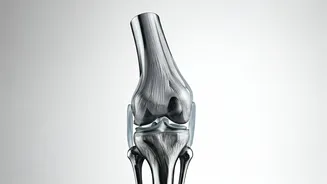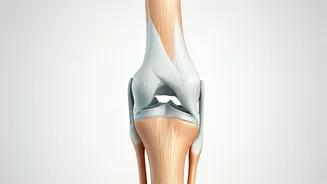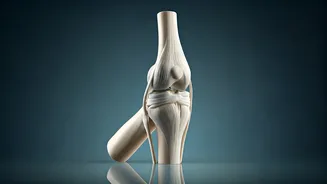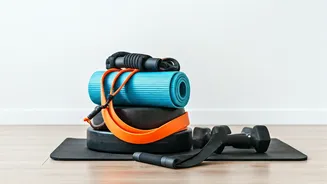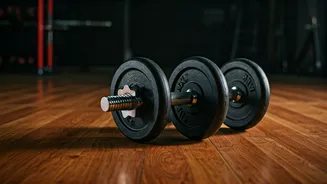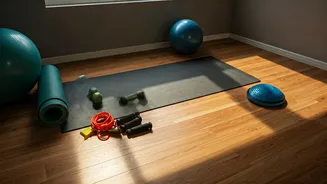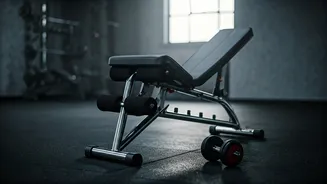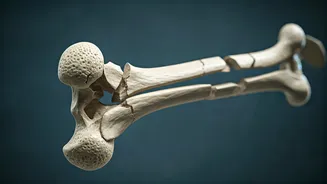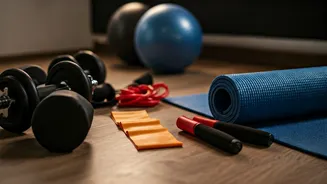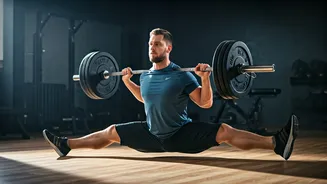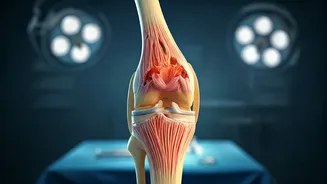High-Impact Cardio
High-impact cardio activities, such as running and jumping jacks, are frequent choices for cardiovascular health, yet they can be harsh on joints. The
repetitive nature of these exercises places significant stress on the knees, ankles, and hips. Each foot strike sends a shockwave through these joints, potentially leading to cartilage breakdown over time. Furthermore, individuals with existing joint issues or those who are overweight are particularly vulnerable. Consider alternative cardio options like swimming or cycling. These activities offer a cardiovascular workout with minimal joint impact. Modifying running by incorporating shorter strides or running on softer surfaces, like a track, can also reduce impact. Always remember to prioritize proper warm-up and cool-down routines to prepare and protect your joints.
Deep Squats and Lunges
Deep squats and lunges, if performed incorrectly, can strain the knees and hips. While these exercises are excellent for building lower-body strength, improper form can lead to excessive joint compression. When squatting, going too low can force the knees past the toes, putting undue pressure on the joint. Similarly, lunges done with poor alignment can lead to similar problems. The key is to maintain proper form: keep your back straight, core engaged, and ensure your knees don't extend past your toes. Consider using a mirror to check your form. Furthermore, gradually increase the depth of your squats and lunges as your strength improves. Using lighter weights or focusing on controlled movements can also help mitigate joint stress. If you experience any pain, stop the exercise and consult a physical therapist or trainer to correct your form and prevent future damage.
Overhead Pressing Movements
Overhead pressing movements, involving lifting weights above the head, are important for upper-body strength. However, these exercises can put strain on the shoulder joints. The shoulder joint is inherently unstable, making it vulnerable to injury if the muscles surrounding it are not strong enough. Incorrect form, such as arching the back or using momentum, can further exacerbate this issue. To protect your shoulders, maintain a neutral spine and engage your core throughout the movement. Start with lighter weights and focus on controlled motions. Consider variations like dumbbell presses, which allow for a more natural range of motion and reduce the risk of injury. Moreover, warming up your shoulders properly before starting overhead presses is crucial. This will prepare the muscles and joints for the demands of the exercise.
Excessive Plyometrics
Plyometrics, or jump training, involves explosive movements designed to improve power and speed. However, excessive plyometric exercises, such as box jumps and depth jumps, can lead to joint damage, especially in the knees and ankles. These exercises involve a high degree of impact, which can place significant stress on the joints. To minimize the risk of injury, start with low-impact plyometric exercises, such as jump squats, before progressing to more advanced movements. Ensure you have a strong foundation in strength and conditioning before incorporating plyometrics into your routine. The surface you jump on also matters: softer surfaces, like a track or grass, can absorb some of the impact. Furthermore, always prioritize proper form and listen to your body. If you feel any pain, stop immediately and rest.
Twisting Movements
Exercises that involve excessive twisting movements, especially with added weight, can be harmful to the spine and joints. Rapid or uncontrolled twisting can strain the intervertebral discs and ligaments of the spine, potentially leading to injuries. Similarly, twisting motions in sports like tennis or golf, done without proper technique, can put stress on the joints. To mitigate the risk, focus on controlled movements and avoid sudden twists. When using weights, opt for lighter loads and concentrate on maintaining good form. Strengthening the core muscles is also essential, as they provide stability to the spine and help protect against injuries. Incorporate exercises that focus on core strength and stability to support the spine during twisting motions. Always be mindful of your body's limits and stop if you feel any pain.
